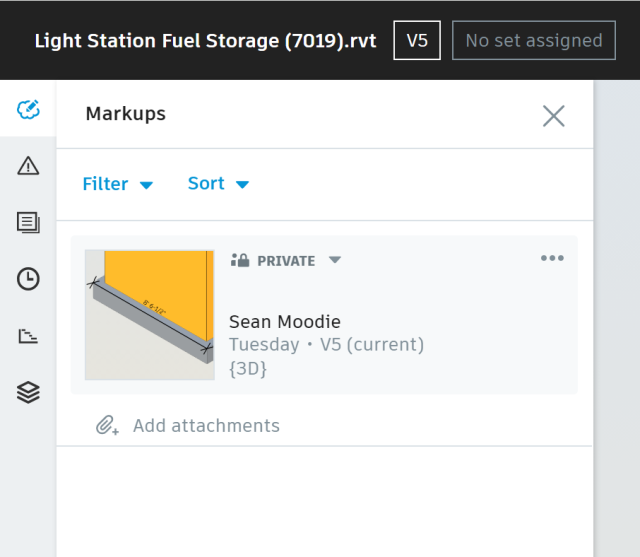This article will explain several ways of making and saving measurements in BIM 360. Advantages and limitations of each method will be noted throughout the tutorial.
Measurement Accuracy
Keep in mind that any measurement taken from BIM 360 should be considered an estimate. Models maintained by Facilities Information and Technology Services are not intended for construction. Multiple factors affect the accuracy of measurements, including how precisely your selection area is drawn and your measurement settings.
Measurement Options in BIM 360
There are two ways of taking measurements in BIM 360: The Measure tool and Markups.
Measure Tool
Advantages
- Offers measurement options not available with markups such as areas and angle measurements.
- Measurement endpoints can be adjusted after placement.
- The model can be rotated freely while drawing measurements.
Disadvantages
- No built-in way of saving measurements. You must use a screenshot or other external application to save your work.
Markups
Advantages
- Can be saved in BIM 360 and accessed to view, print, or edit later.
- Easily export to PDF from BIM 360.
- Customizable font and line styles.
- Can be combined with other shapes and text.
Disadvantages
- Only measures distance. No option for areas or angles.
- Endpoints of a measurement cannot be adjusted.
- The model cannot be repositioned while drawing a markup.
Measuring 3D Designs with the Measure Tool
The Measure tool is found on the toolbar that is located at the bottom of the screen. Click on the ruler icon to show the Measure menu.

To measure length, click on the Distance tool (ruler with two-sided arrow icon).
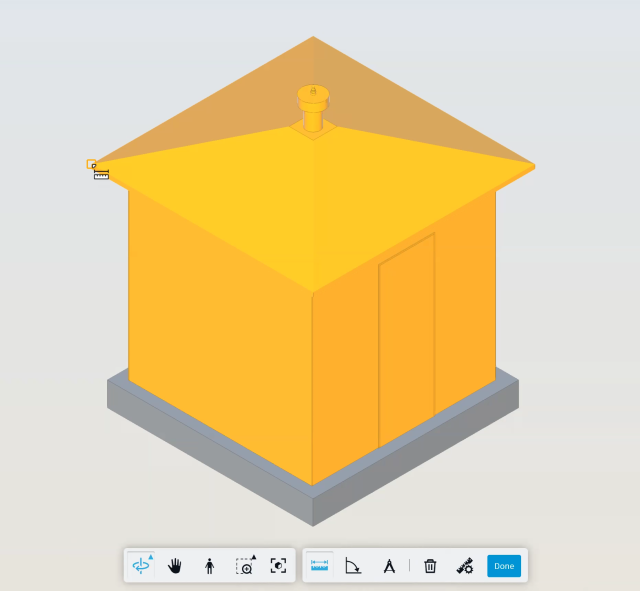
When the Distance tool is enabled, your cursor will show a square when you can snap to an endpoint or a Y-shape when you can snap to a line. A triangle appears at the center point of a line. By default, your measurement must snap to the model. You can change this behavior by turning on Enable Free Measure in Measure Settings, but be aware that free measure will make it more difficult to place your measurements accurately.
Click on a point to begin a measurement. After the first point is selected, a line and a reading of the current measurement will appear. Click another point to place your measurement.
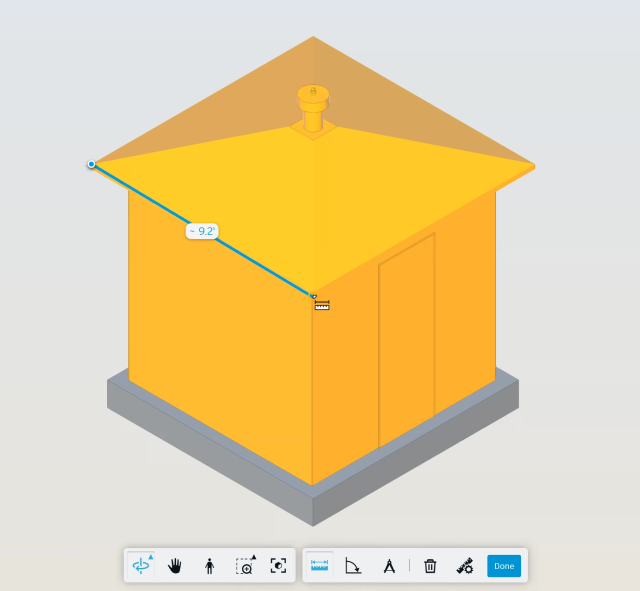
The measurement unit type can be changed in Measure Settings (ruler and gear icon).
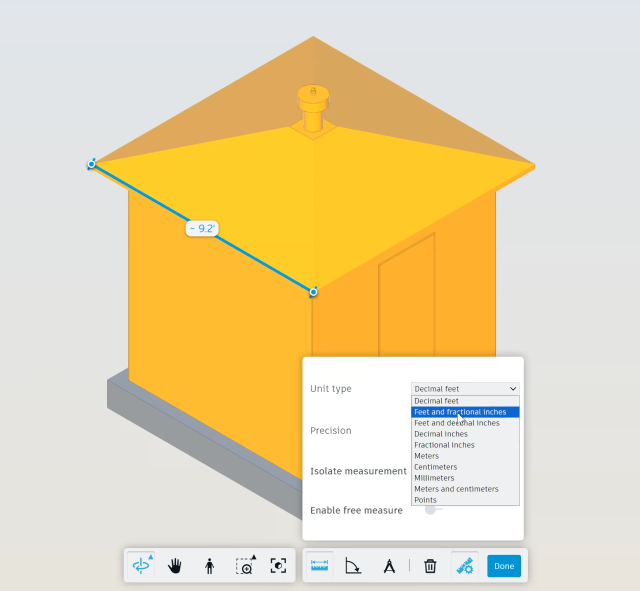
You can place as many measurements as you need.
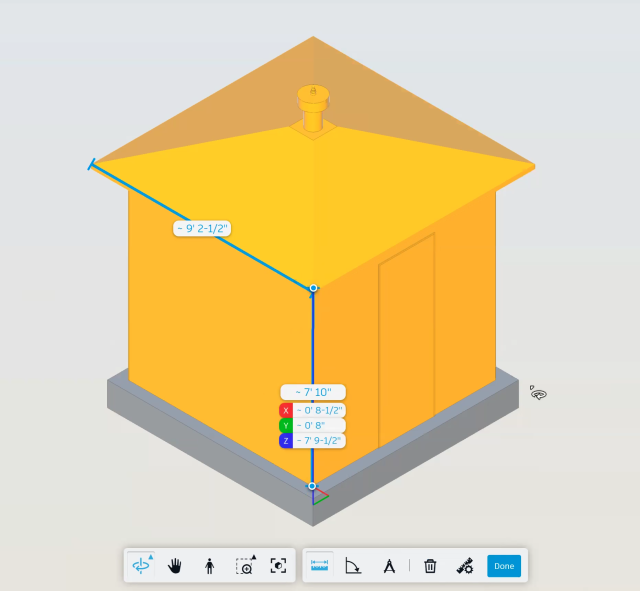
If a set of X, Y, and Z measurements appears, your line was not placed in parallel with the model. This can be hard to see from some angles, so it helps to rotate the model to verify your measurement.
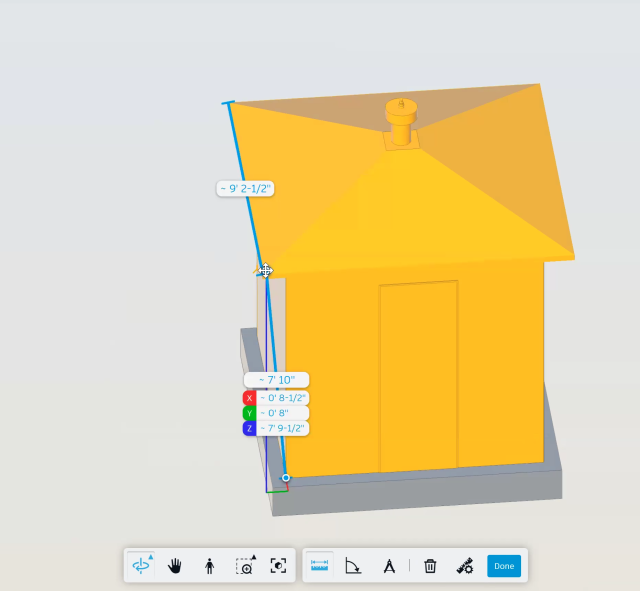
The line that is currently selected will show circles at the endpoints. Hover the mouse over an endpoint and the cursor will change to a four-sided arrow. Click to select the endpoint and you can move it to a new location. Click again to place the endpoint. To delete the line that is currently selected, click the trash can icon.
The Angle tool icon is directly to the right of the Distance tool. With the Angle tool, click on at least two points to display the current angle. Click on a third point to place your angle measurement.
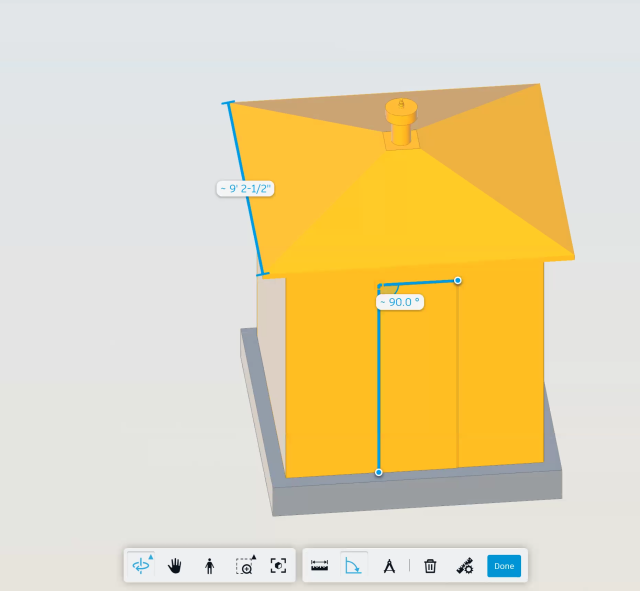
When finished, click Done to clear all measurements and exit the Measure tool menu.
Measuring 2D Designs with the Measure Tool
The measure tool works in much the same way for 2-dimensional designs as it does for 3-dimensional designs (see above). In 2D designs, we have the additional ability to measure areas. Click on the ruler icon to open the Measure tool menu and click Area (shaded polygon icon).
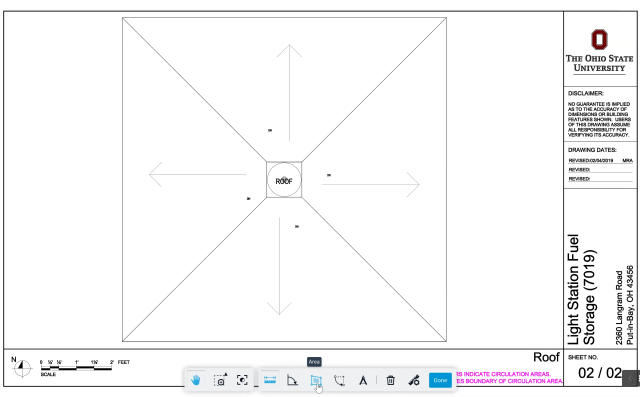
Select at least two points to begin measuring an area. Once the second point is selected, a polygon appears with a reading of the area. Select additional points as needed to define your area. When finished, close the shape by clicking on the first point one more time.
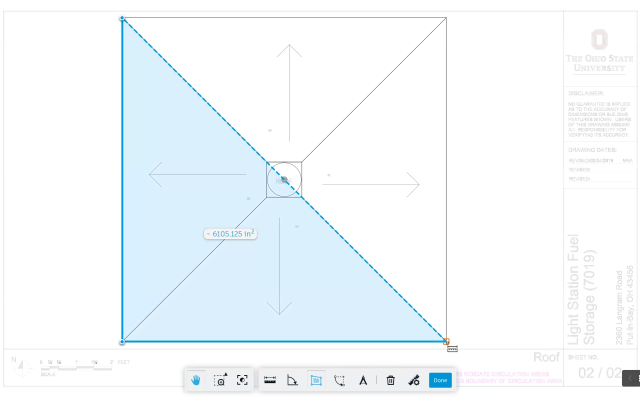
Saving Measurements with Screenshots
There is no built-in method for saving Measure tool measurements in BIM 360. A screenshot is the recommended method for saving measurements. Most devices and operating systems are capable of saving screenshots. Directions will vary by device. Once you have drawn your measurements (before you click Done) take a screenshot to save your work.
Measuring with Markups
The markups toolbar is located on the right side of the screen and features several tools for adding shapes and text. Once you begin drawing a markup, the view of the model will be locked in place until you save or cancel the markup. To take measurements in a markup, select the Dimension tool from the markups menu (two-sided arrow between two lines icon).
The measurement units of your markup will be determined by the units selected in Measure Settings. (See Measuring 3D Designs with the Measure Tool for additional information.)

With the Dimension tool selected, click on the first point of your measurement, then click on a second point to place the measurement. Once the measurement has been placed, options will appear to change text size, text color, line color, and line thickness. You may also click the trash can icon to delete the measurement.
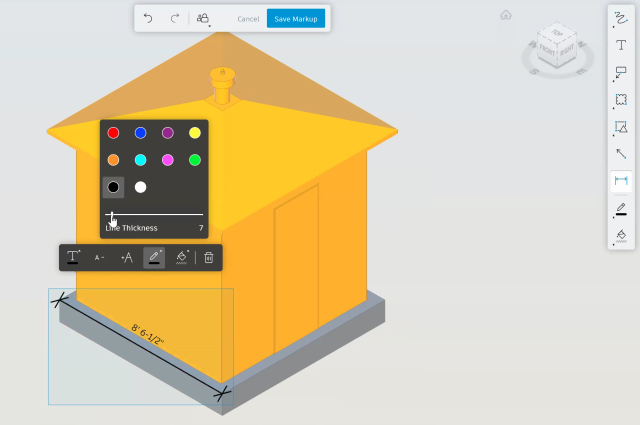
Place as many additional measurements as you need, or add shapes and text using the other tools on the markups toolbar.
To save your markup to PDF, click on the context menu in the upper right corner of the screen (three dots icon) and select print. Select Adobe PDF from your printer options.
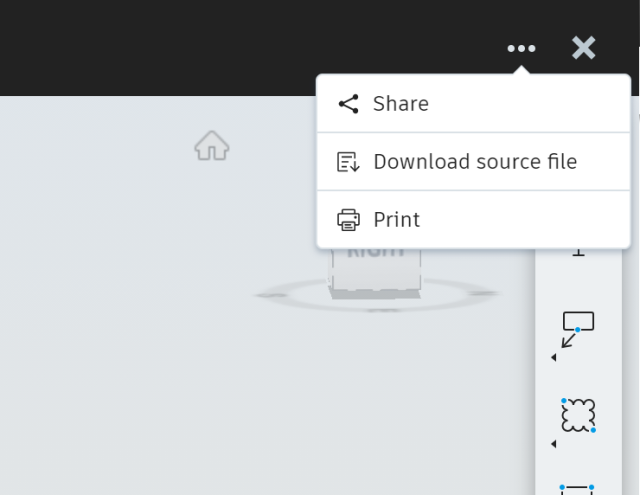
Select Save Markup to keep your markup in BIM 360 for future use.

To locate saved markups of the current model, open the Markups panel on the left side of the screen (pencil in cloud icon). Select a markup from the list to open. From here, you can edit or print your markup as needed.
